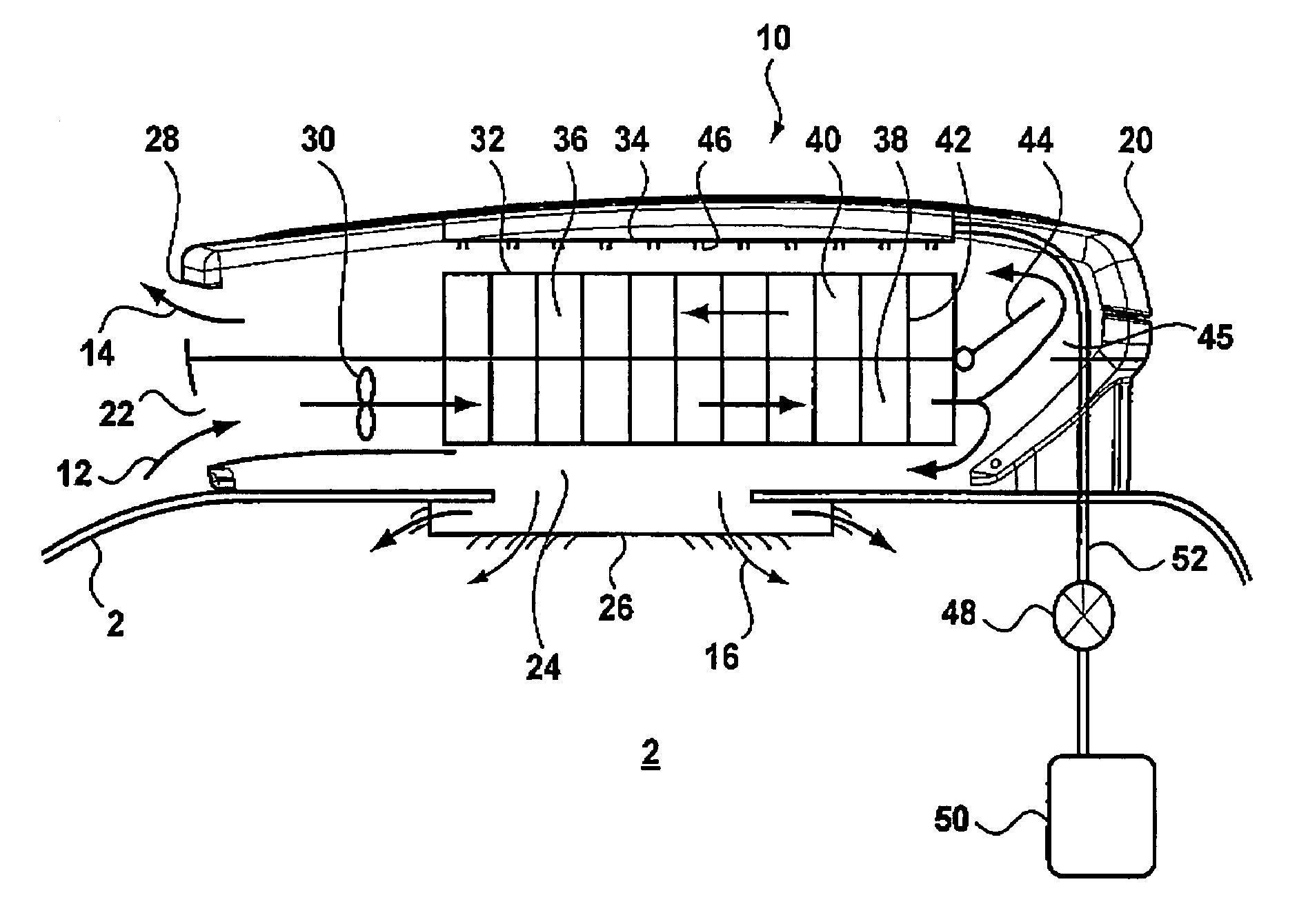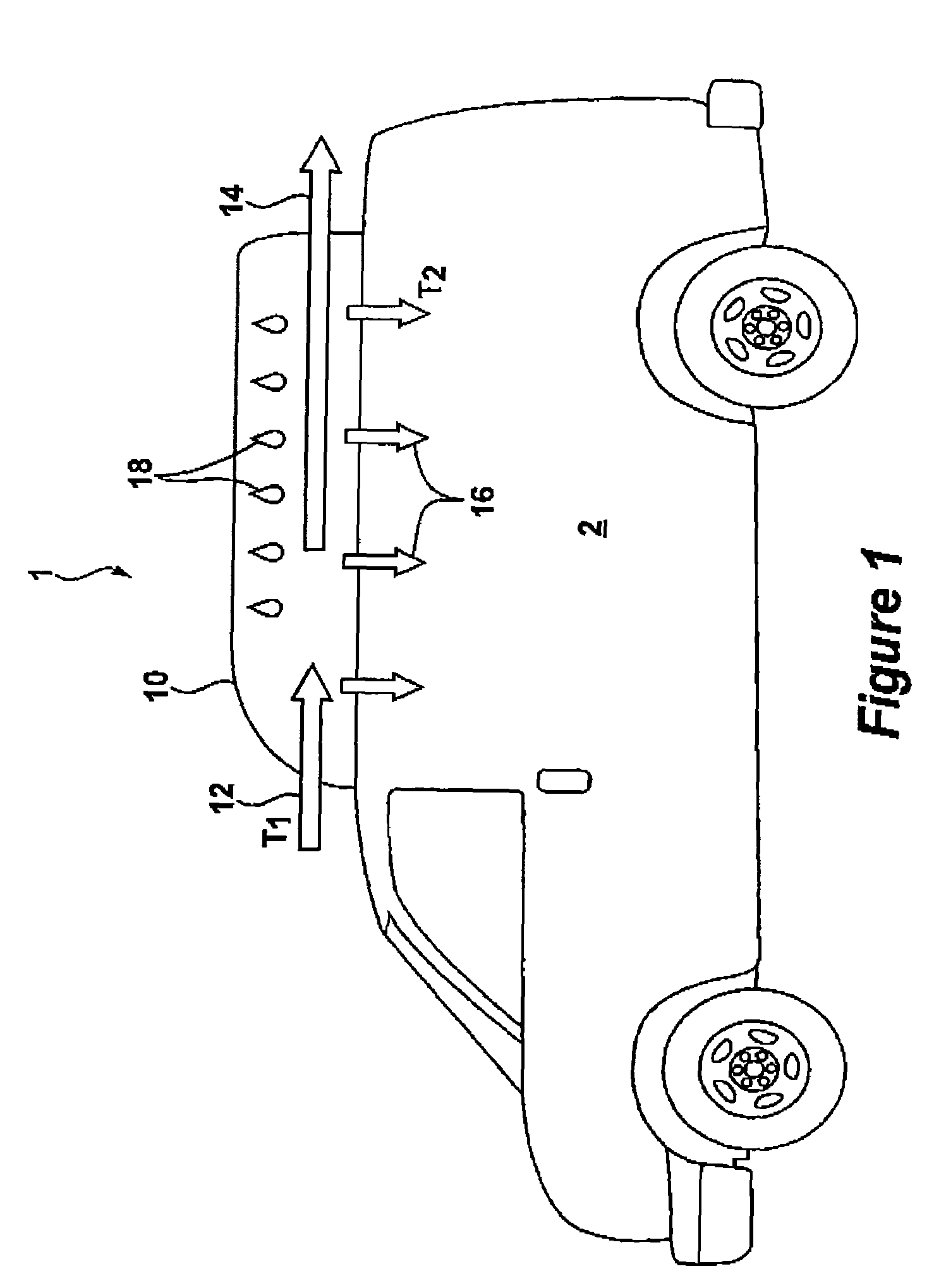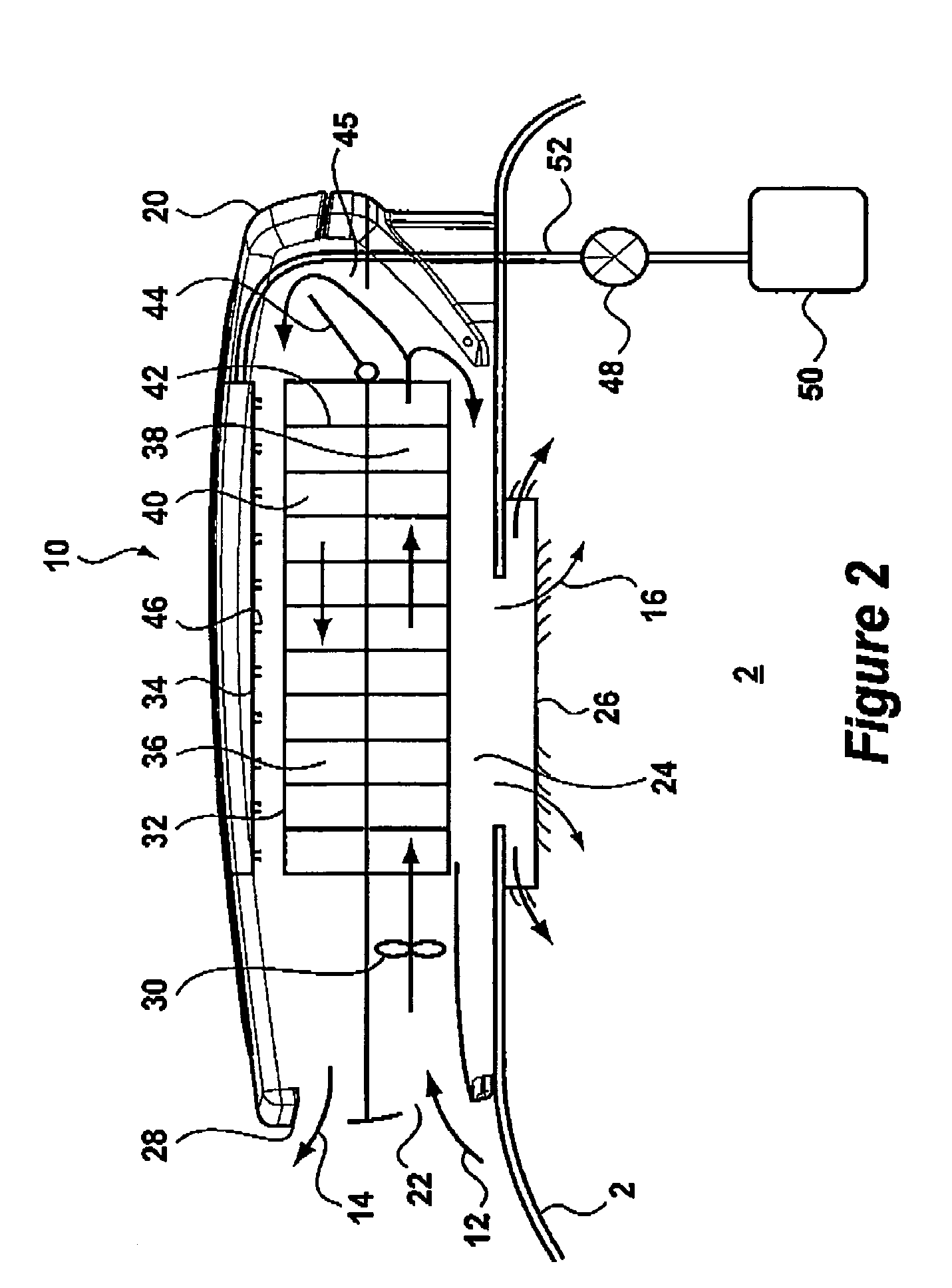Vehicle cooler
a technology for coolers and vehicles, applied in the field of vehicle coolers, can solve the problems of increased fuel consumption, substantial energy consumption, and considerable noise, and achieve the effects of low energy consumption, low weight and volume, and high cooling capacity
- Summary
- Abstract
- Description
- Claims
- Application Information
AI Technical Summary
Benefits of technology
Problems solved by technology
Method used
Image
Examples
Embodiment Construction
[0028]Referring to FIG. 1, there is shown a vehicle 1 provided with a vehicle cooler 10 according to the present invention. The vehicle has an interior space 2 in which the occupants of the vehicle are located. According to the present invention, the vehicle may be an automobile, truck or recreational vehicle. The invention is particularly advantageous for those situations where it is desirable to sleep or otherwise dwell within the vehicle. Under such conditions, it may be desirable to maintain the cooler operational for extended periods of time without leaving the motor running and without the requirement of an additional generator.
[0029]According to the schematic view of FIG. 1, the cooler 10 receives a flow of primary air 12 at a first temperature T1. The primary air 12 is cooled within the cooler 10 as will be described below by heat transfer to a flow of secondary air 14, which is exhausted to atmosphere. The cooled primary air 12 is supplied to the interior space 2 as a flow ...
PUM
 Login to View More
Login to View More Abstract
Description
Claims
Application Information
 Login to View More
Login to View More - R&D
- Intellectual Property
- Life Sciences
- Materials
- Tech Scout
- Unparalleled Data Quality
- Higher Quality Content
- 60% Fewer Hallucinations
Browse by: Latest US Patents, China's latest patents, Technical Efficacy Thesaurus, Application Domain, Technology Topic, Popular Technical Reports.
© 2025 PatSnap. All rights reserved.Legal|Privacy policy|Modern Slavery Act Transparency Statement|Sitemap|About US| Contact US: help@patsnap.com



